Noma Kyoto pops up with a design inspired by Japanese culture
The Noma Kyoto pop-up is open until 20 May 2023, hosted in the spaces of Kengo Kuma's Ace Hotel, and with interiors designed by Copenhagen's OEO Studio
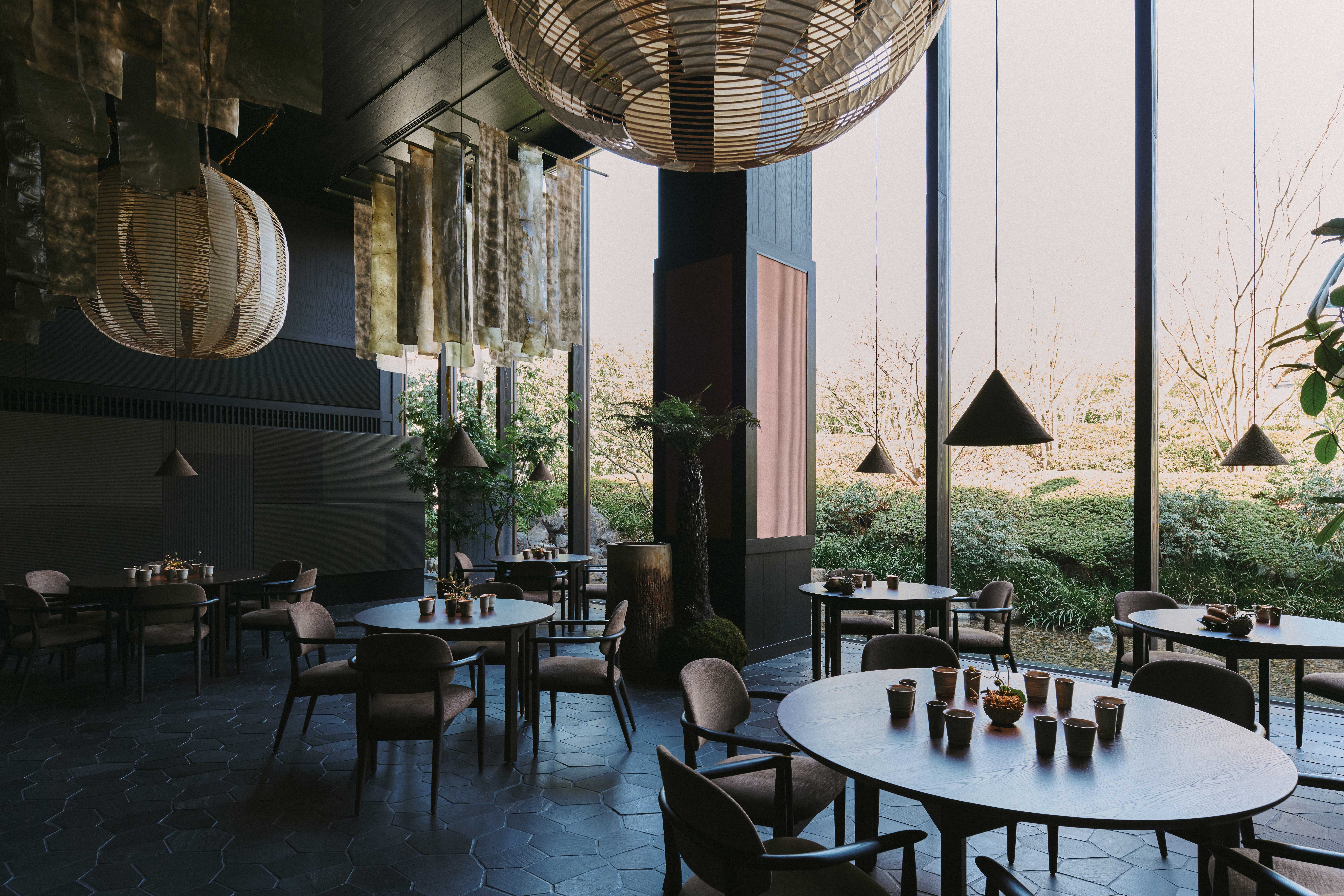
Leaves, rocks, flower pods, shells, moss balls and a floating seaweed forest – plus ceramics, bamboo, lacquerware, natural textiles, tatami screens and wood craftsmanship. The boundary between the natural and the handcrafted is organically blurred to scenic contemporary effect at Noma Kyoto, the latest in a string of global pop-ups by wildly acclaimed Copenhagen restaurant Noma.
The ten-week pop-up – until 20 May 2023, which coincides with the ancient city’s famed cherry blossom season – fuses the beauty of natural objects with a cornucopia of more than 50 handcrafted items, from cups and knives to lighting, by mainly Japanese and Nordic makers.
Noma Kyoto pop-up: interiors by OEO Studio
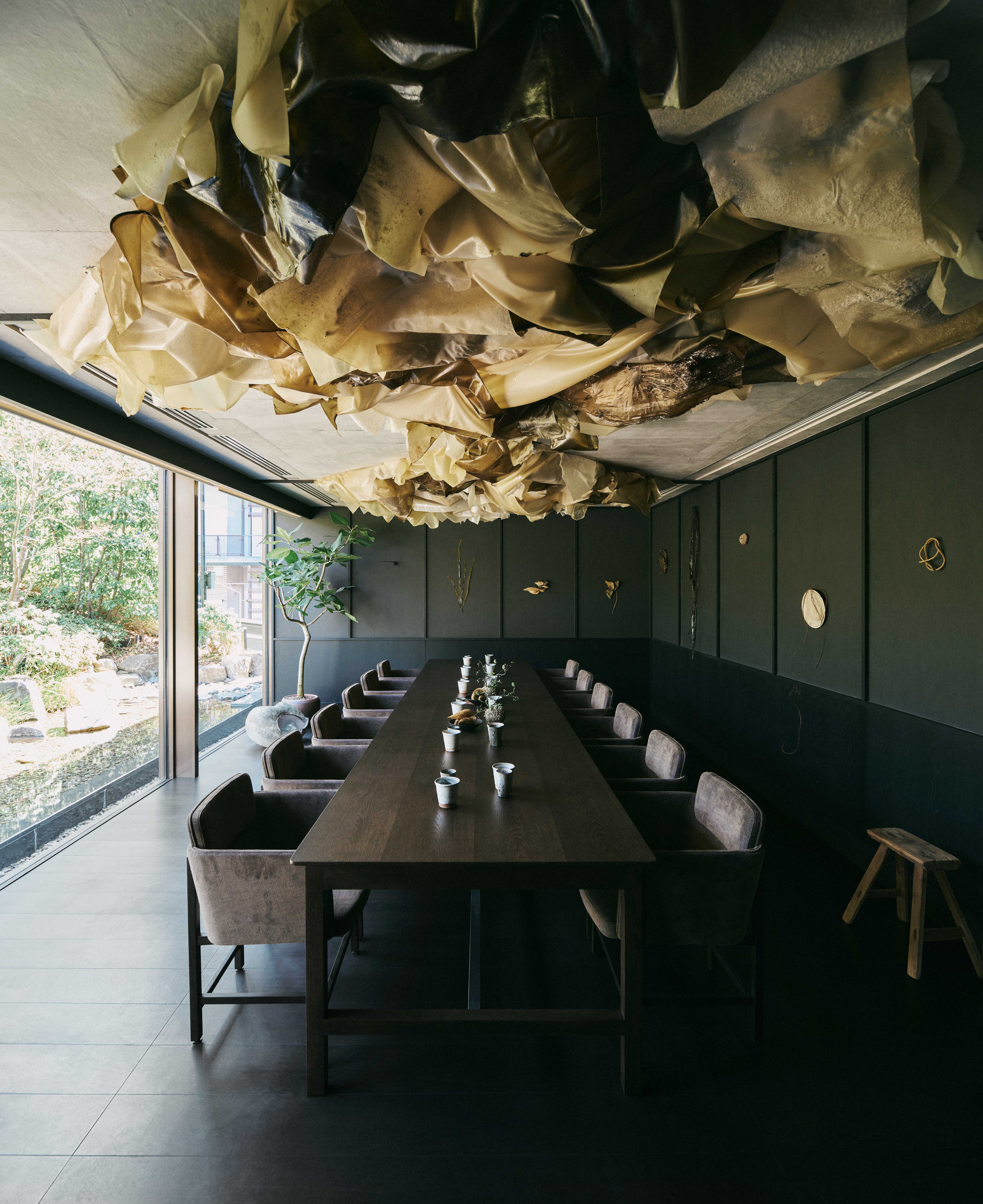
The space, designed by Copenhagen-based OEO Studio alongside Christine Rudolph, Noma’s resident stylist, spans the third-floor restaurant of the Ace Hotel Kyoto, a large double-height space with a wall of windows overlooking a rooftop garden.
Showing Wallpaper* around the space, René Redzepi, Noma’s founding chef – who has relocated his entire staff and their families (95 people in total) from Copenhagen to Kyoto – explains: 'I would sum it up as handmade, modern, respectful. We wanted to balance the handcrafted elements so it didn’t feel too traditional.'
Thomas Lykke, co-founder of OEO Studio alongside Anne-Marie Buemann, adds: 'The key inspiration for Noma Kyoto was Japanese culture and Kyoto. The interior is an accolade of the richness in craftsmanship, tradition and cultural heritage.'
Upon arrival, a treasure trail of natural objects – shells, leaves, stones – subtly lines the staircase that leads from the Ace Hotel Kyoto lobby to the third-floor restaurant entrance. Here, visitors pass through the jewel red and green tones of a hanging noren curtain, created for Noma by the legendary 101-year-old Japanese artist Samiro Yunoki (whose bold-hued works are also scattered throughout the hotel).
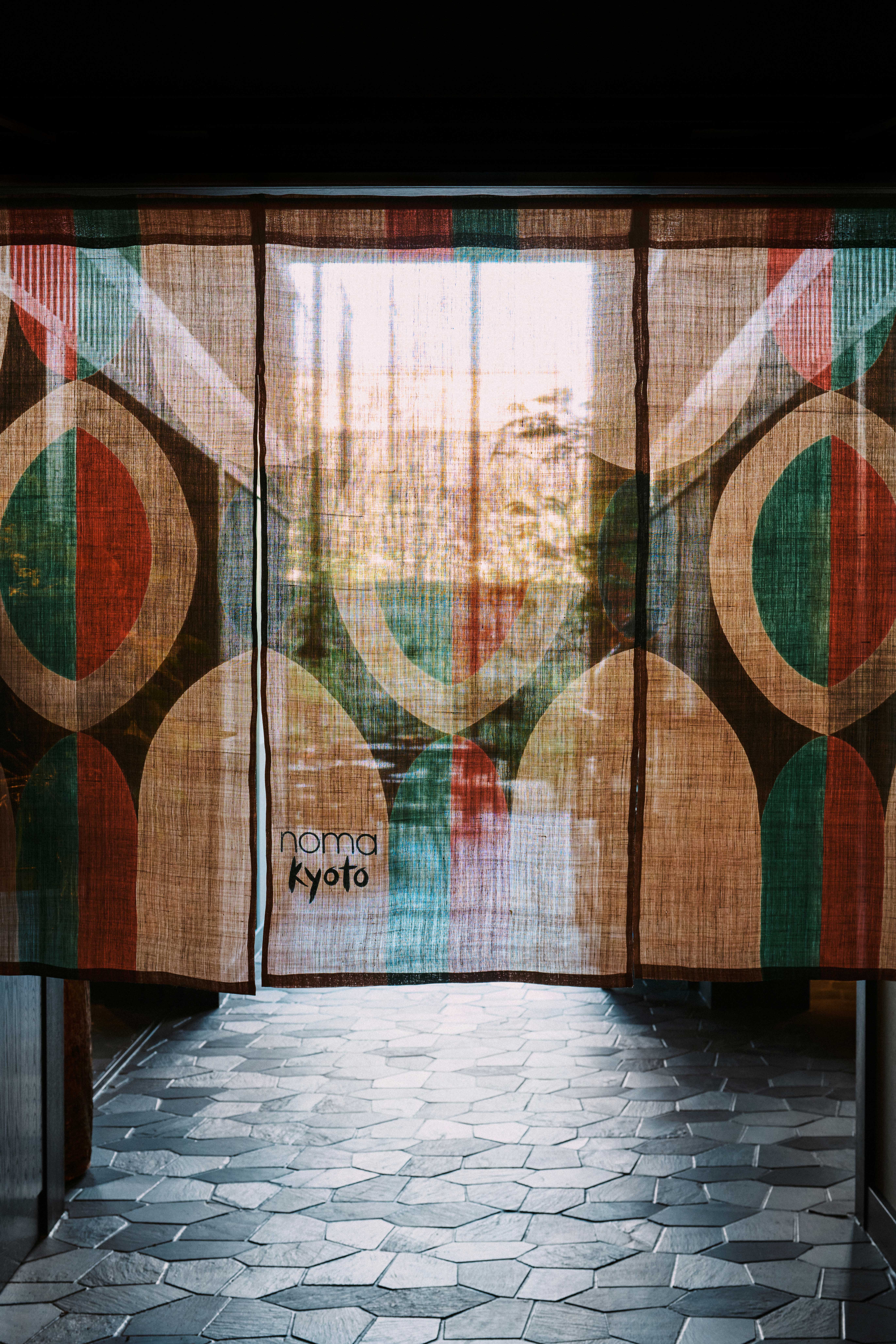
Stepping inside, an otherworldly nature-inspired scenography unfolds – with the tone set by a large moss ball sculpture abstractly adorned with exotic foliage, including a Lady of the Night orchid.
Wallpaper* Newsletter
Receive our daily digest of inspiration, escapism and design stories from around the world direct to your inbox.
A subdued Kyoto palette of earthy tones spans the space, reflected in sage, grey and coral tatami mat panels by Yokoyama Tatami forming minimalist, vertical space dividers; dark brown oak tables from a bespoke Stellar Works AYA Collection by OEO Studio, with Kvadrat-upholstered onyx oak seating; and clean-lined Time & Style cabinets, filled with artefacts from Kyoto temple antique markets, alongside natural objects from forest hikes.
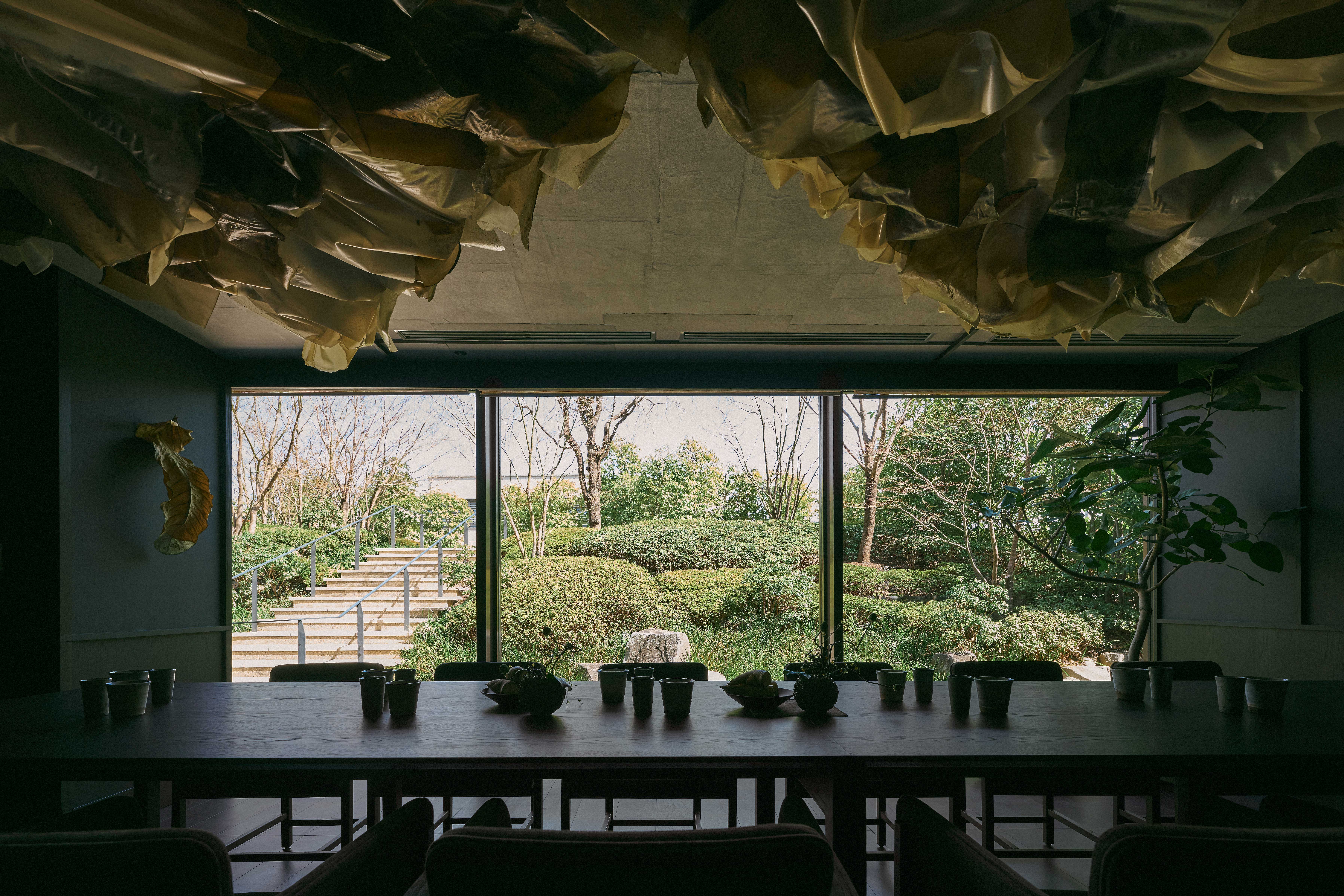
Seaweed is a key component of Noma Kyoto’s DNA, for the interior as well as the contents of its plates – best embodied, perhaps unusually, in its kelp forest. Floating above the heads of diners in the main space, festooned on a bamboo trellis, is a dream-like (and acoustics-absorbing) sea of organic green panels, made from a mix of kelp bio-textiles crafted by Copenhagen-based Natural Material Studio; dyed fabric by Tokyo tenegui-maker Kamawanu; and kelp seaweed, sourced in Japan’s northernmost island Hokkaido. 'This is my favourite feature, it’s a masterpiece, with its mix of materials,' says Redzepi, who plans to hang it up in Noma Copenhagen when the pop-up finishes on 20 May.
As a subtle visual connector with the Copenhagen restaurant, bespoke Kyoto versions of its signature triangular ‘Algae Paper Lamp’ pendant lights, crafted from Danish algae and thermoflock paper, by Jonas Edvard, also hang cleanly above the tables.
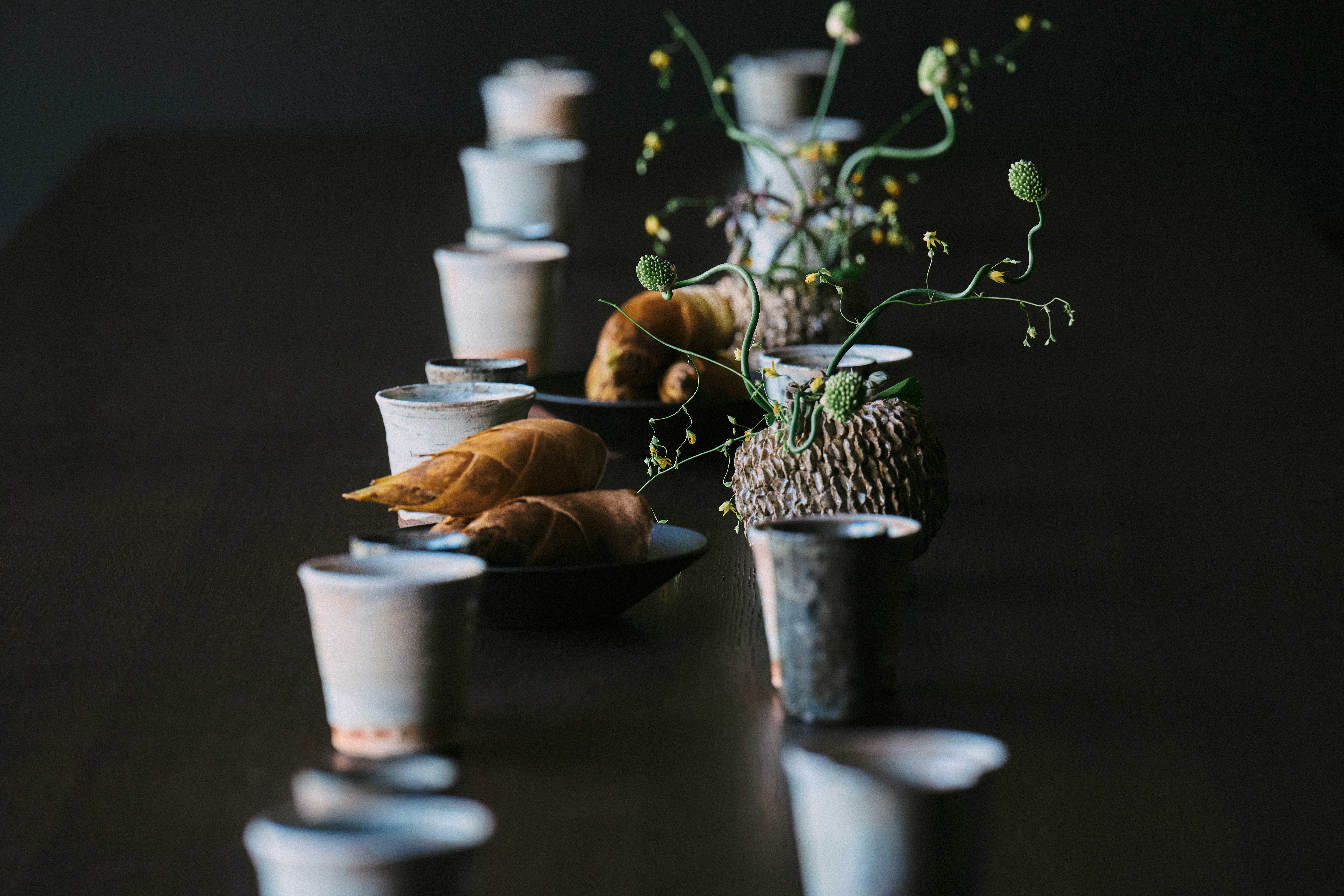
Meanwhile, solid tree trunk-like wine-coolers by famed contemporary wood artist Shuji Nakagawa from nearby Shiga Prefecture, are inspired by usu-mochi, traditional wooden rice-pounding mortars for making mochi sweets.
Ceramics are another highlight, with table tops and interiors deftly interspersed with the wabi-sabi edges of Japanese pottery by artists such as Asuka Juba and Toru Hatta alongside the nature-inspired Danish aesthetics of Ann-Charlotte Ohlsson and Kristine Vedel. 'The colour palettes play off both worlds,' explains Rudolph. 'The darker tones being more Japanese, the tonal earthy tones coming from Scandinavia.'
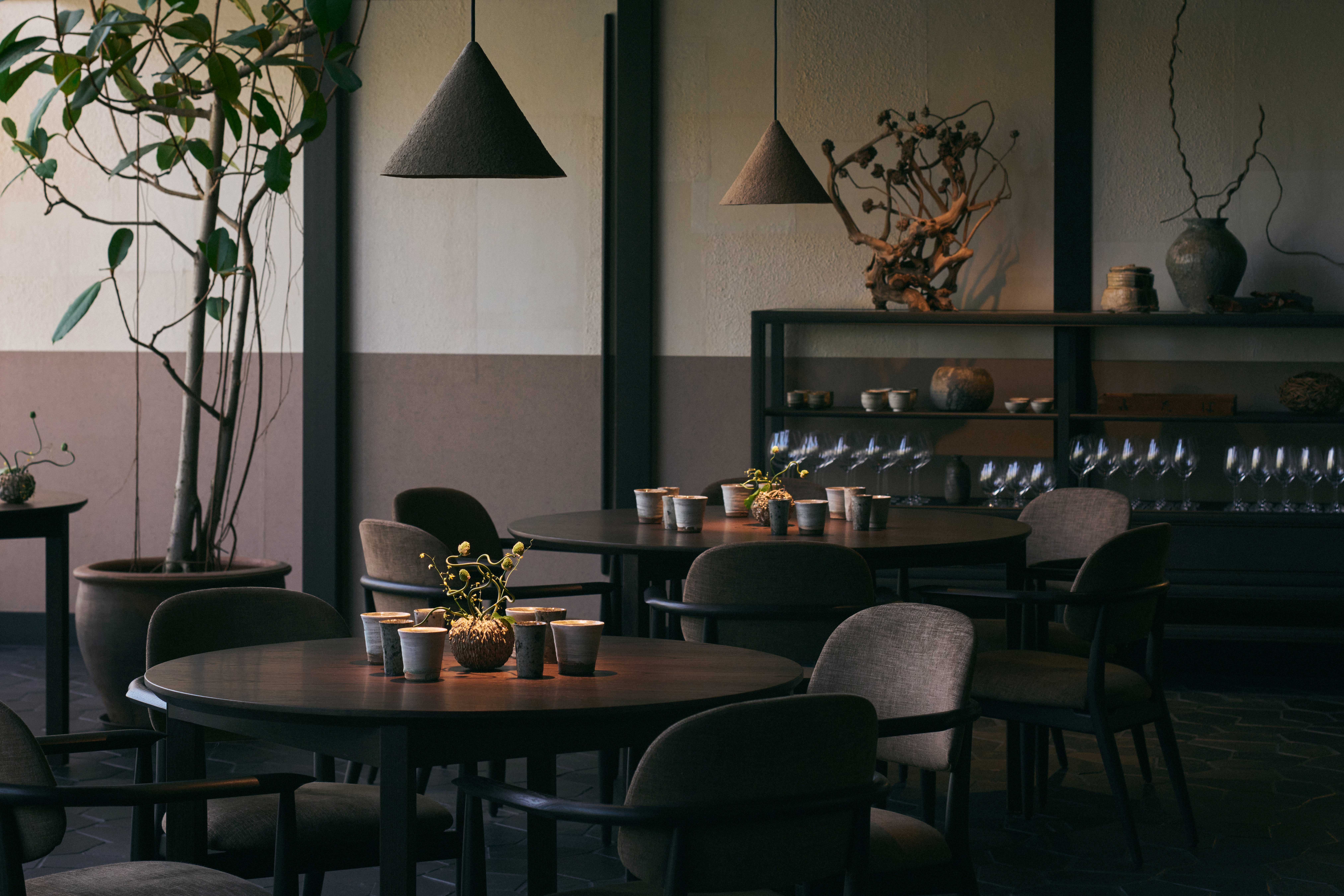
For OEO Studio, a key challenge was balancing the integrity of the existing design, originally for a bistro-style restaurant, with Noma’s essence – resulting in the removal of ornamentation, furniture and lamps, while the floor grouting was darkened to create a monotone grey.
'The menu of Noma Kyoto is sorely based on ingredients and produce from Japan and that is also our approach in the design with a few exceptions,' adds Lykke. 'Noma Kyoto is uniquely Noma Kyoto, just for ten weeks, even though it has taken us and the Noma team two years in the making.'
Noma pop-up at Ace Hotel Kyoto runs until 20 May 2023
Danielle Demetriou is a British writer and editor who moved from London to Japan in 2007. She writes about design, architecture and culture (for newspapers, magazines and books) and lives in an old machiya townhouse in Kyoto.
Instagram - @danielleinjapan
-
 Warp Records announces its first event in over a decade at the Barbican
Warp Records announces its first event in over a decade at the Barbican‘A Warp Happening,' landing 14 June, is guaranteed to be an epic day out
By Tianna Williams
-
 Cure your ‘beauty burnout’ with Kindred Black’s artisanal glassware
Cure your ‘beauty burnout’ with Kindred Black’s artisanal glasswareDoes a cure for ‘beauty burnout’ lie in bespoke design? The founders of Kindred Black think so. Here, they talk Wallpaper* through the brand’s latest made-to-order venture
By India Birgitta Jarvis
-
 The UK AIDS Memorial Quilt will be shown at Tate Modern
The UK AIDS Memorial Quilt will be shown at Tate ModernThe 42-panel quilt, which commemorates those affected by HIV and AIDS, will be displayed in Tate Modern’s Turbine Hall in June 2025
By Anna Solomon
-
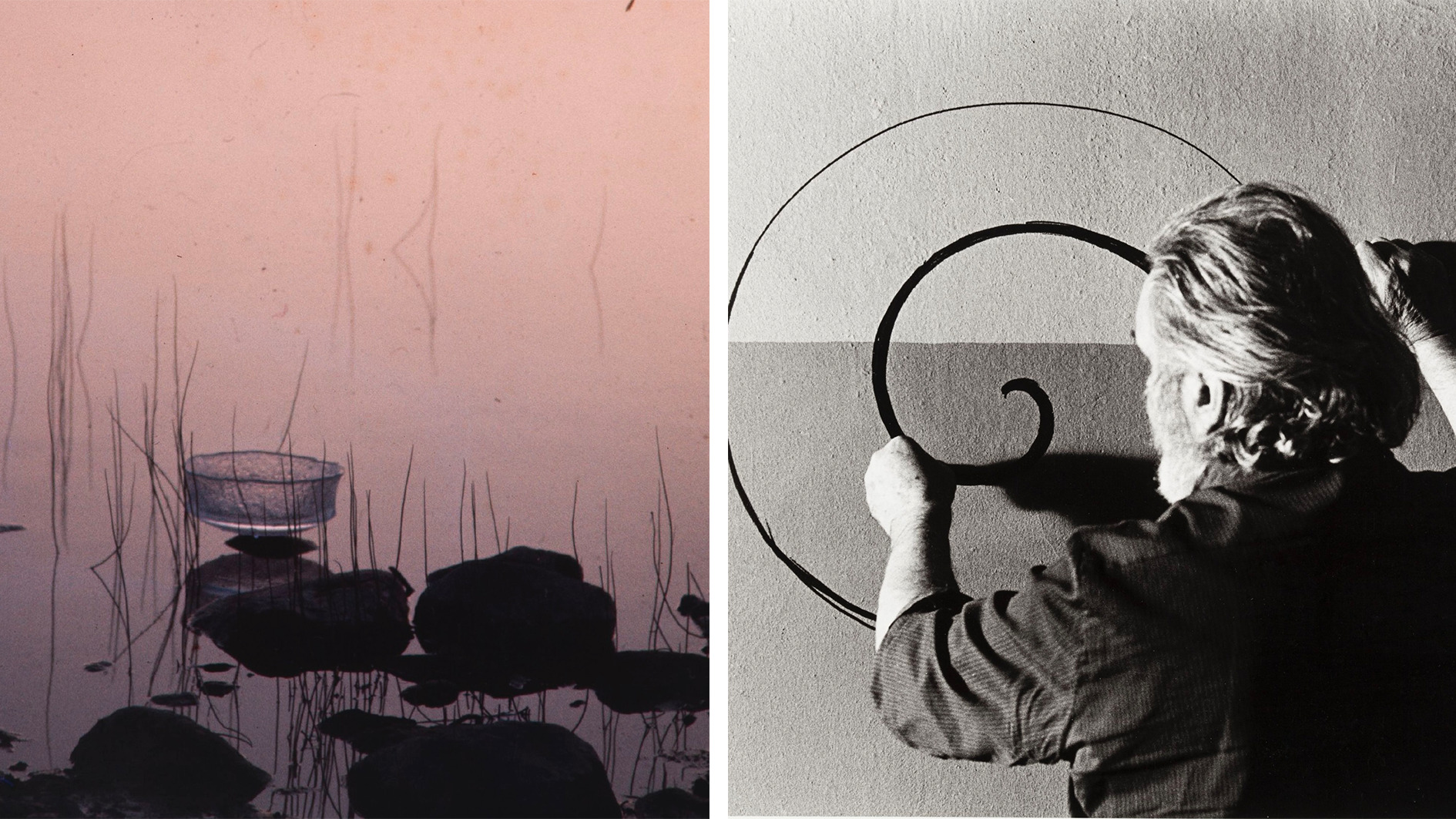 Inside the world of Tapio Wirkkala, the designer who created masterpieces in remotest Lapland
Inside the world of Tapio Wirkkala, the designer who created masterpieces in remotest LaplandThe Finnish artist set up shop in an Arctic outpost without electricity or running water; the work that he created there is now on display at a retrospective in Japan
By Anna Solomon
-
 Naoto Fukasawa sparks children’s imaginations with play sculptures
Naoto Fukasawa sparks children’s imaginations with play sculpturesThe Japanese designer creates an intuitive series of bold play sculptures, designed to spark children’s desire to play without thinking
By Danielle Demetriou
-
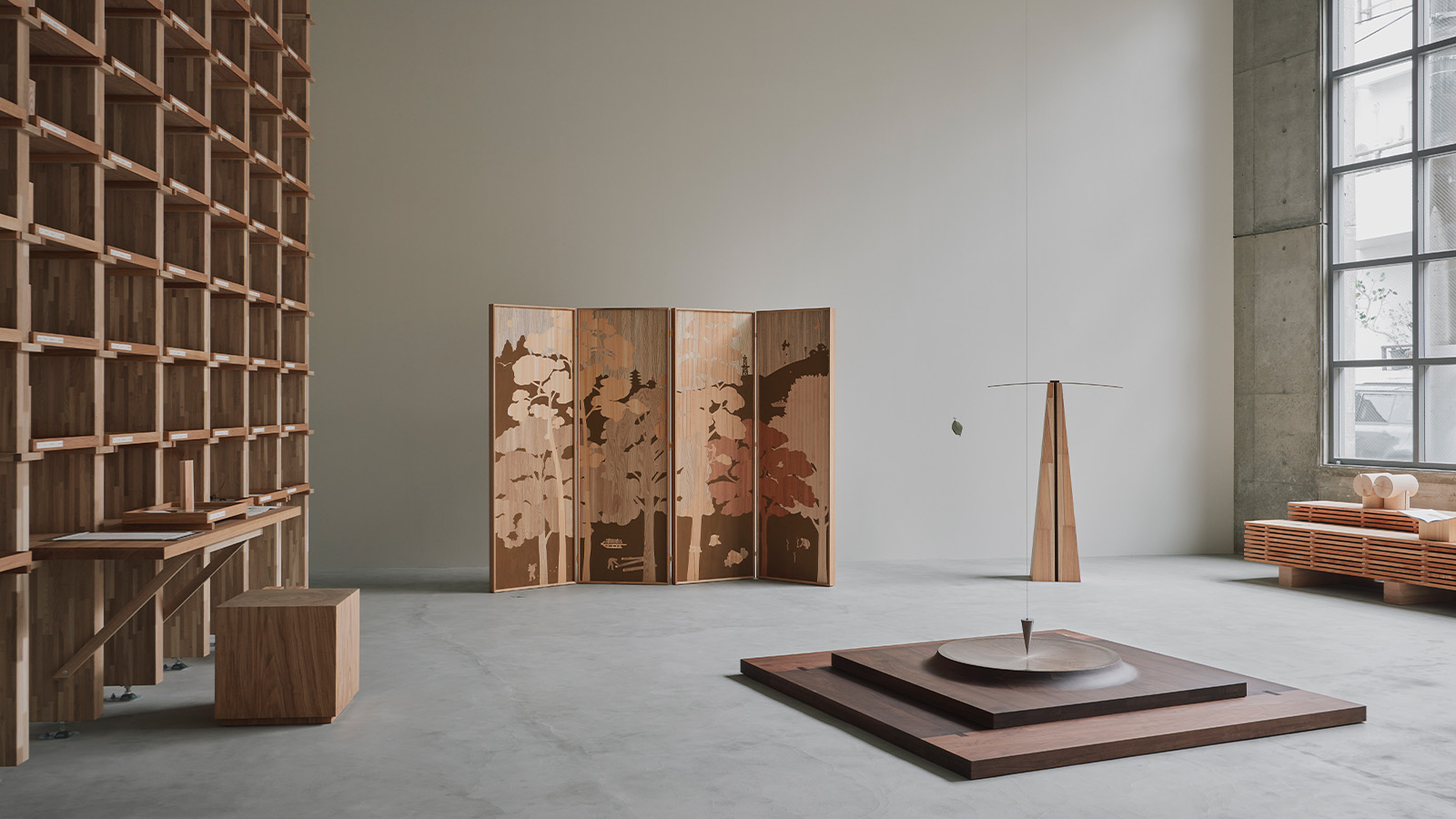 Time, beauty, history – all are written into trees in Karimoku Research Center's debut Tokyo exhibition
Time, beauty, history – all are written into trees in Karimoku Research Center's debut Tokyo exhibitionThe layered world of forests – and their evolving relationship with humans – is excavated and reimagined in 'The Age of Wood', a Tokyo exhibition at Karimoku Research Center
By Danielle Demetriou
-
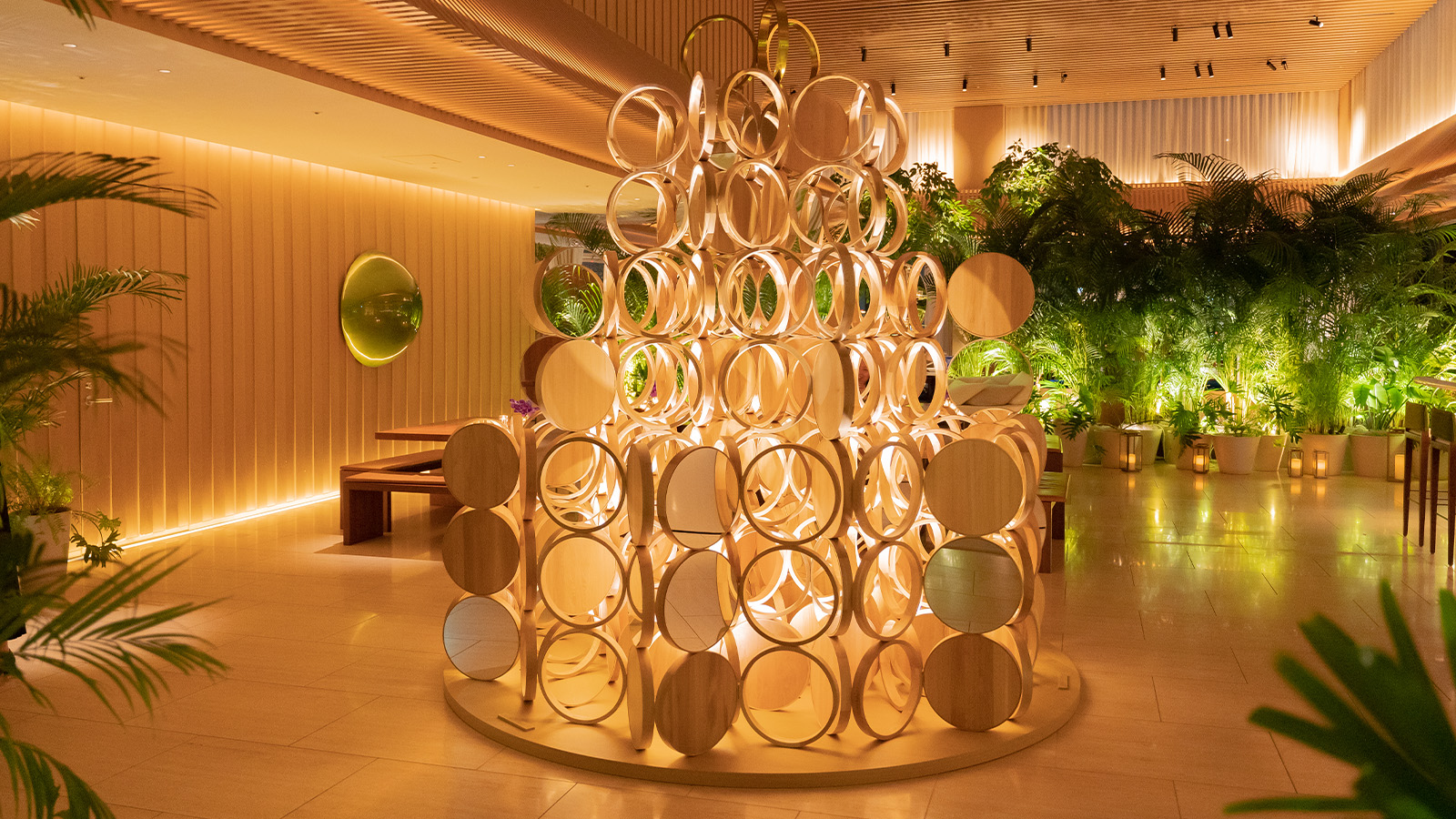 Minimal curves and skilled lines are the focal point of Kengo Kuma's Christmas trees
Minimal curves and skilled lines are the focal point of Kengo Kuma's Christmas treesKengo Kuma unveiled his two Christmas trees, each carefully designed to harmonise with their settings in two hotels he also designed: The Tokyo Edition, Toranomon and The Tokyo Edition, Ginza
By Danielle Demetriou
-
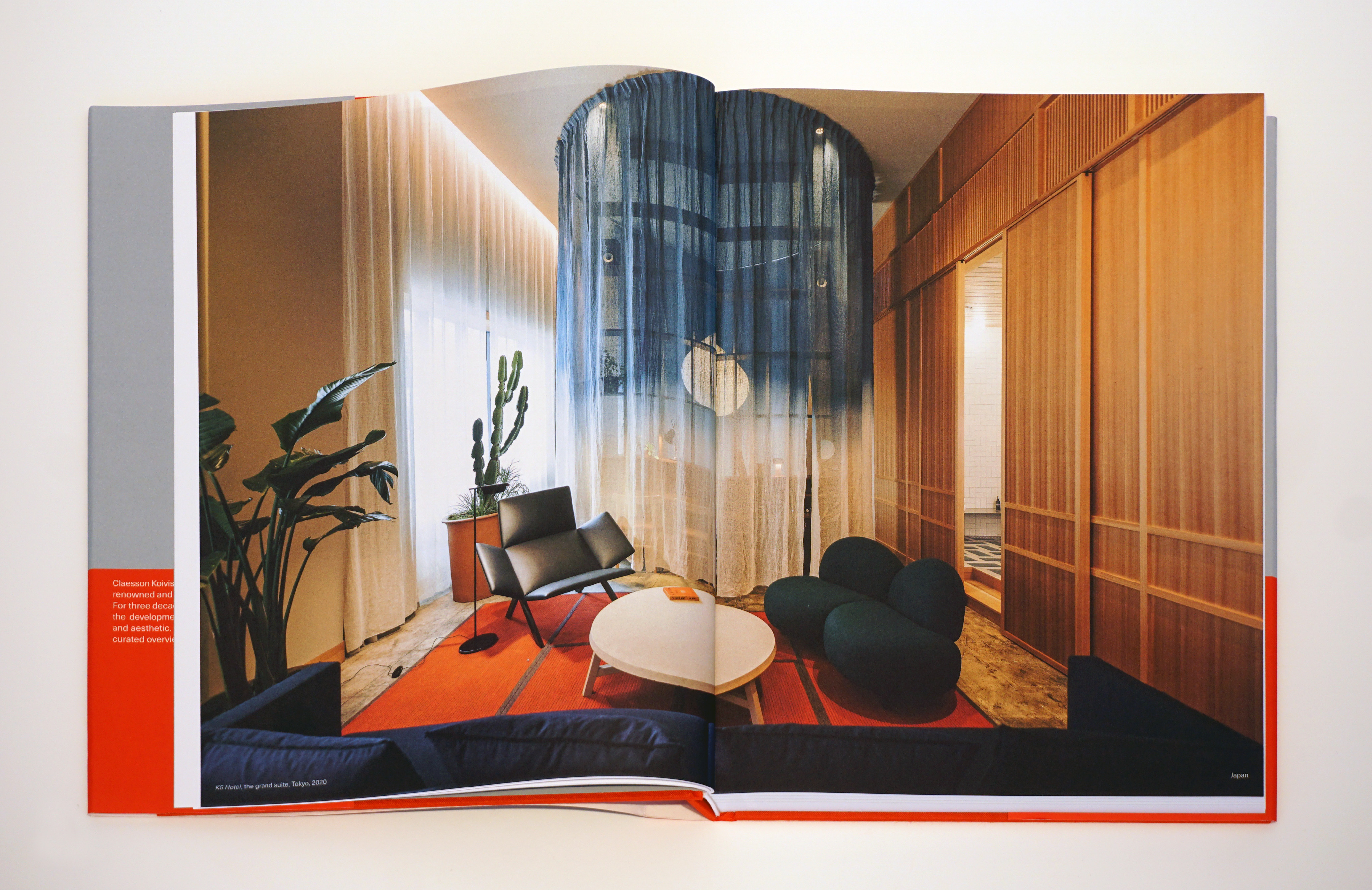 Claesson Koivisto Rune on 30 years of their often Japan-inspired designs, charted in a new book
Claesson Koivisto Rune on 30 years of their often Japan-inspired designs, charted in a new book‘Claesson Koivisto Rune: In Transit’ is a ‘round-the-world journey’ into the Swedish studio's projects. Here, the founders tell Wallpaper* about their fascination with Japan, and the concept of aimai
By Danielle Demetriou
-
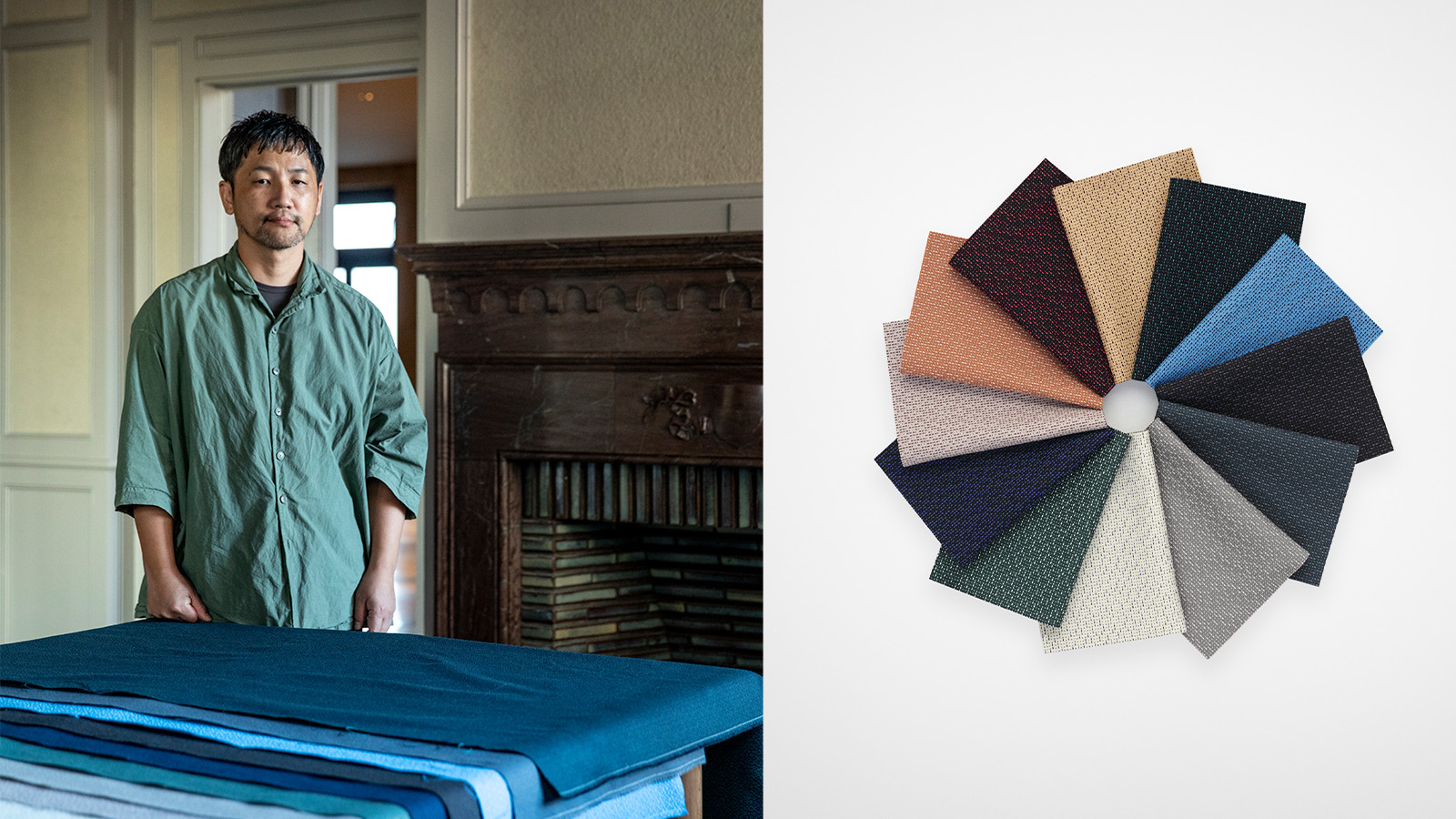 Teruhiro Yanagihara's new textile for Kvadrat boasts a rhythmic design reimagining Japanese handsewing techniques
Teruhiro Yanagihara's new textile for Kvadrat boasts a rhythmic design reimagining Japanese handsewing techniques‘Ame’ designed by Teruhiro Yanagihara for Danish brand Kvadrat is its first ‘textile-to-textile’ product, made entirely of polyester recycled from fabric waste. The Japanese designer tells us more
By Danielle Demetriou
-
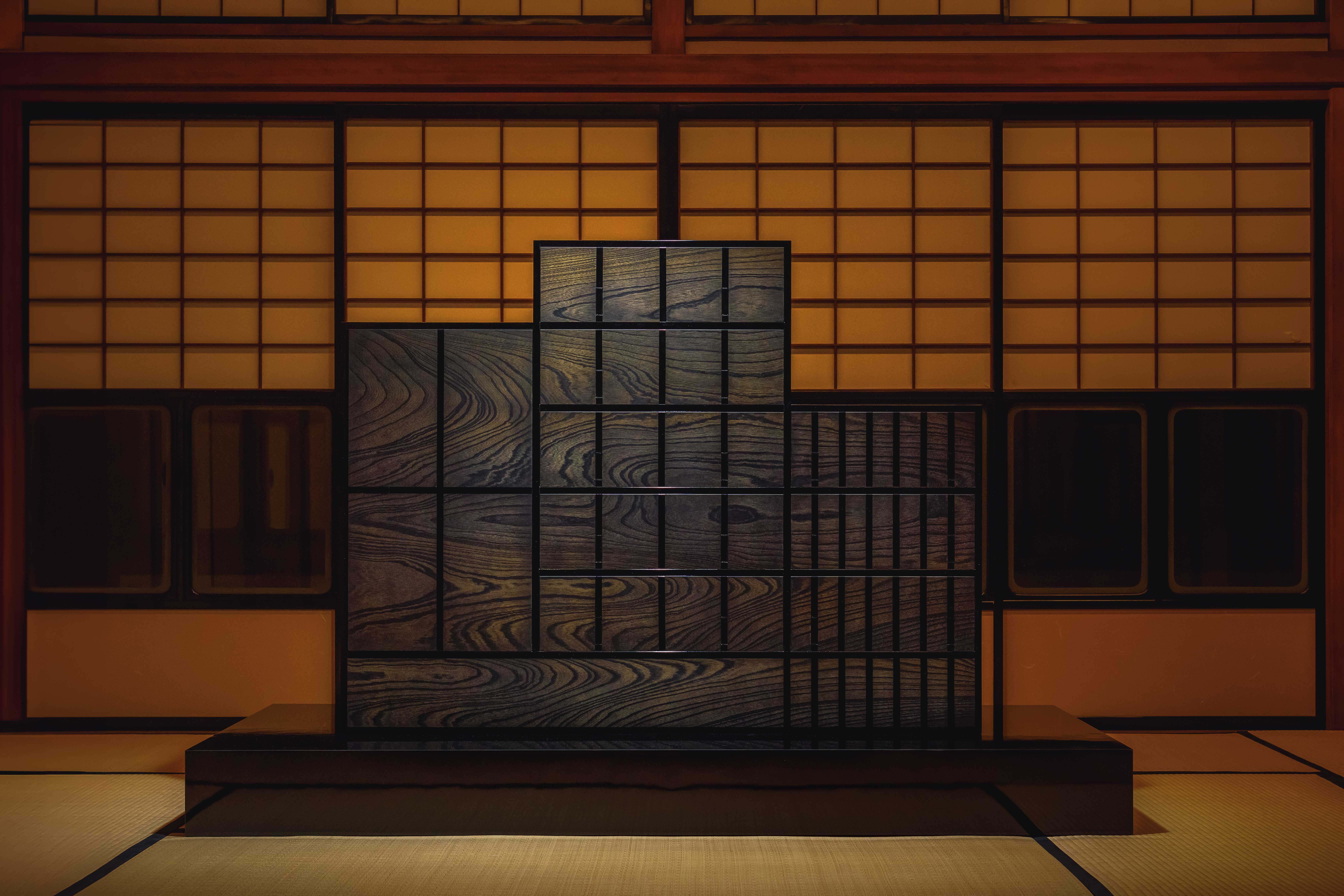 Craft x Tech elevates Japanese craftsmanship with progressive technology
Craft x Tech elevates Japanese craftsmanship with progressive technologyThe inaugural edition of Craft x Tech was presented in Tokyo this week, before making its first international stop at Design Miami Basel (11-16 June 2024)
By Danielle Demetriou
-
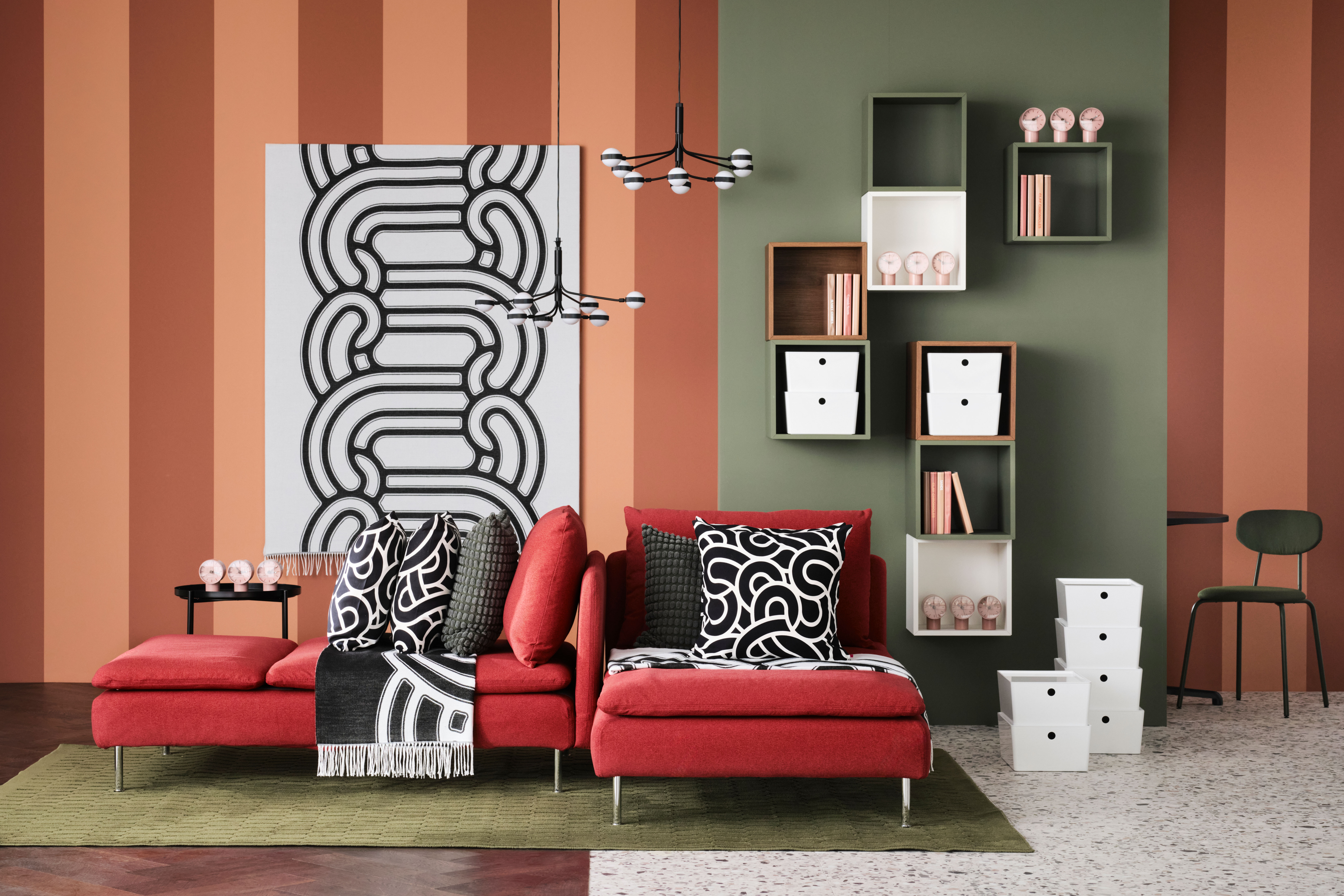 Ikea meets Japan in this new pattern-filled collection
Ikea meets Japan in this new pattern-filled collectionNew Ikea Sötrönn collection by Japanese artist Hiroko Takahashi brings Japan and Scandinavia together in a pattern-filled, joyful range for the home
By Rosa Bertoli